photo courtesy Biswarup Sarkar
Making a clay deity sculpture. Photo Fergus Ray Murray
The figurines of divinities, murti, are also being made of clay. Each region, even each village sometimes, has its own vast amount of deities to be worshiped at special periods and on special occasions. Clay being at hand and inexpensive has become the main material for murti. Besides, as these divinities are believed to loose their divine qualities once they are worshiped they are left in some quiet spot to crumble back into mother earth again or drowned in a water pond to be dissolved. Very ecological indeed. In many ceremonies and rituals clay animal figurines are used, they are offered either in fulfillment of a vow, for warding off some disease or for obtaining some favour. The figurines serve as substitutes and are sacrificed instead of real animals.
Terracotta panel from the Hadal-Narayanpur temple. Photo courtesy Asis K. Chatterjee
Distinctive feature of Indian pottery is its organic, simple yet attractive shape and ornamentation. There are a few special types however, depending on region. The Jaipur and Delhi blue pottery is quite famous. The Delhi pottery has a penetrating blue, bordering on turquoise colour, sometimes shot with green. The Jaipur pottery is quite unique as it is perhaps the only pottery produced without the use of clay. It is considered to be more hygienic for daily use cause it does not develop any cracks. It is decorated with arabesque patterns, interspersed with animal and bird motifs.
Clay figurines from Delhi. Photo source
Jaipur blue pottery. Photo source
Jaipur pottery. Photo from here
Khurja pottery. Photo courtesy Raj Kumar
A white clay vase from Kutch
Bankura horses, West Bengal. Photo from here
There are umpteen varieties of pottery in West Bengal. It is colorful and beautiful and is used not only for domestic purpose but in auspicious ceremonies, like marriages, birth rituals and other such ceremonies.
West Bengal pottery. Photo source
Pottery from Goa. Photo source
So, with such varieties of styles, colours and forms everyone will be able to find a lovable object to take home as a souvenir from India.



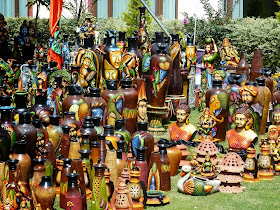
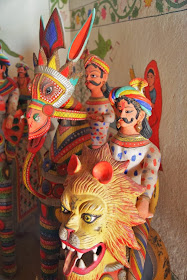
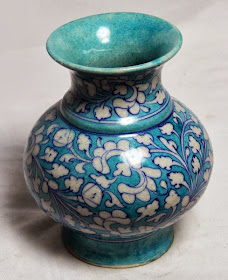
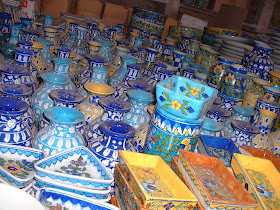
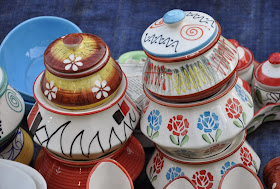

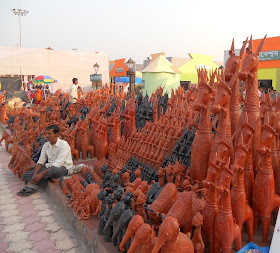
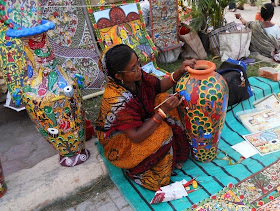
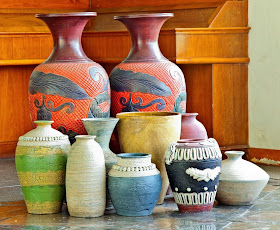
Indian pottery is truly beautiful. You're right, there is such richness of styles that everyone can find something for himself.
ReplyDeleteNice blog.
ReplyDeletevisit pottery handicraft
Nice blog
ReplyDeletePottery Handicraft
Really nice Indian Traditional Pottery. Tanjore painting.
ReplyDeleteThanks for sharing this fantastic blog! Celebration Management is a trusted event management company based in Delhi NCR, specializing in providing festival and event decoration services across Delhi NCR and other major cities in India. They focus on creating memorable and personalized festive experiences with a professional team dedicated to timely delivery and customer satisfaction.
ReplyDelete